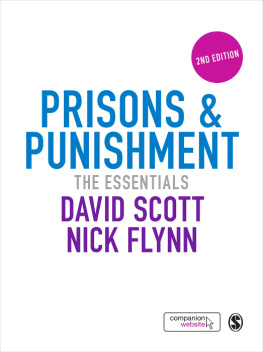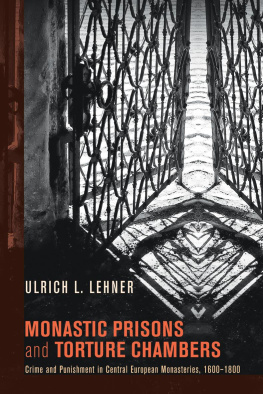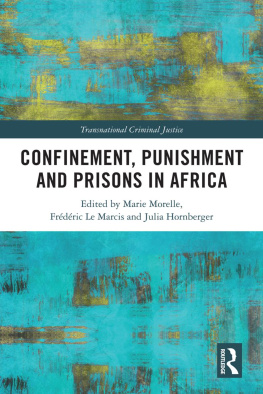I first thank God for surrounding me with extraordinary colleagues, friends, and family who encouraged me throughout the course of this project, which started as my dissertation at the University of Florida. I owe an enormous debt of gratitude to my dissertation committee chairs, William Link and Matt Gallman, for their direction, encouragement, and insightful feedback. I am also grateful to committee members Louise Newman, Jeff Adler, and Sevan Terzian for their thoughtful questions and commentary, which shaped my thinking as I revised the project from dissertation to book.
Numerous colleagues read and commented on drafts of this project, either as conference papers or independent chapters. My sincere thanks to Glenn Robbins, Bill Blair, Aaron Sheehan-Dean, Mark Grimsley, Peter Carmichael, Lesley Gordon, Greg Downs, Christina Bon, and Joyce Harrison for their feedback. Thank you to Gerry Wolfson-Grande, who combed through the manuscript and footnotes, and to Kevin Morrow, who helped me access collections at the National Archies. Will Underwood, my editor at Kent State University Press, and reviewers Michael Gray and Richard Bell offered invaluable suggestions for revision that pushed me to improve the manuscript.
My colleagues at St. Petersburg College have provided significant support over the years. I would especially like to thank my dean, Joseph Smiley, colleagues Greg Byrd, Nan Morelli-White, Linda Yakle, and my colleagues in the Social and Behavioral Sciences Department on the Clearwater Campus. I also owe a debt of gratitude to my students at SPC, especially those in the American History Research Club who served as research assistants. They include Shannon Johnson, Drew Tharaldson, Christina Stomper, Ramsey Kwajaha, Hadley Koontz, Audrey Shaw, and Youstina Ebaid. I could not have completed the research for this project without the invaluable, expedient, and continuous help of St. Petersburg Colleges Interlibrary Loan staff. They include Wanda McCawthan, Danery Pacheco, Melinda McBride, and Joanne Arthur. I received generous funding to complete research for this project from numerous organizations, including the Mellon Research Fellowship Program at the Virginia Historical Society, the St. Petersburg College Center for Excellent Teaching and Learning Travel Grant Program, the North Caroliniana Society Archie K. Davis Fellowship Program, and the Friends of Andersonville POW Research Grant Program. Many thanks to Eric Leonard and Chris Barr for the time and knowledge that they shared with me while I was at the Andersonville National Historic Site.
This project would have been impossible without the support of friends and family members. I would especially like to thank the members of the North Pinellas YMCA who have, over the past six years, regularly attended the Cycle and Abs class that I teach. They have consistently provided me with much-needed mental breaks and laughter, which bolstered my energy to keep researching and writing. My brother, Joe, and sister-in-law, Lindsay, have provided invaluable love and encouragement throughout the course of this project. While working on this project, I met and married Theo Lorentzos and am grateful every day for his love, support, and encouragement. None of this would have been possible without the love and support of my parents, Frank and Nancy Zombek. They not only provided a second set of eyes on every word I have written, but have been my biggest cheerleaders throughout the entire course of my life. Words cannot express my appreciation and I dedicate this work to them.
Portions of this work appeared in earlier form in Ohio History 118 (2011), and in Civil War History 63, no. 3 (September 2017). Copyright 2011 and 2017 by Kent State University Press. Reprinted with permission.
In 1864, John King weighed the option of escape while he languished in an overcrowded Ohio prison. King knew that harsh punishment awaited failure. Guards could suspend inmates by their thumbs, which could cause insanity; compel hard labor with a ball and chain attached to the ankle; or buck and gag offenders for hours in a cold, solitary cell. At first glance, it would appear that King wanted out of the Ohio Penitentiarynineteenth-century contemporaries knew that penitentiary discipline included hard labor and physical punishments. In reality, King wanted to escape from Camp Chase, a Union military prison located a few miles from the Ohio Penitentiary. His recollections indicate that penitentiaries and Civil War military prisons shared much in common.
Almost forty years ago, historian Blake McKelvey, without explanation, stated that the Civil War helped to coordinate in time and character the scattered strands of normal penological development. McKelveys assertion seemed calculated to incite inquiry and this study answers that call. It reveals that both military and civil officials drew on ideas about imprisonment that emerged with the establishment of antebellum penitentiaries to meet the wars crisis of imprisonment as they pressed existing penitentiaries into use, commandeered abandoned factories and warehouses, and constructed stockades and barracks to hold wartime offenders. It demonstrates that the civil and military disciplinary programs were intimately connected since antebellum penal reformers drew on military discipline to formulate the penitentiary program and wartime military officials directed the operation of military prisons by incorporating aspects of the penitentiary program into military discipline.
A comprehensive story of Civil War military prisons can be told only when viewed in proper context since wartime officials relied heavily on antebellum practices to manage thousands of captives. Antebellum assumptions about prison administration, the proper treatment of inmates, inmates identity, and methods of punishment born in penitentiaries shaped the administration of both Union and Confederate military prisons. Wartime prison officials and inmates reflected awareness of the penitentiary program in their writing as they conceptualized the relationship between administrators and inmates, as they implemented or experienced punishment, and as prisoners and prison administrators interacted with the outside world. The nature of Civil War military prisons was complex and it is impossible to extract these institutions from trends in nineteenth-century penal development, especially in a republic devoid of a standing army and largely immune from military conflicts.
Placing Civil War military prisons in the broader narrative of the development of nineteenth-century imprisonment reveals that concerns wartime contemporaries voiced about military prisons were, in fact, similar to those that surrounded penitentiaries before, during, and after the Civil War. Antebellum, wartime, and postwar officials worried about the cost of imprisonment, overcrowding, supply shortages, physical punishment, and inmates psychological and physical distress. The Civil War magnified these problems since almost every household had a family member or close friend who fought, died, or was imprisoned during the conflict. Thus, wartime imprisonment attracted more widespread attention since many inmates were middle- and upper-class citizen-soldiers or civilians who, in ordinary circumstances, would likely have never experienced military service or imprisonment. The development of the penitentiary program in the antebellum period shaped Americans interpretations of the Civil Wars crisis of imprisonment since penitentiaries established expectations for prison operation and framed inmates identity.


 Kent, Ohio
Kent, Ohio




